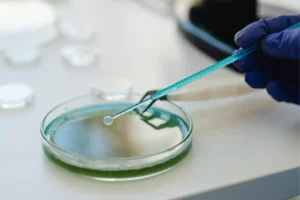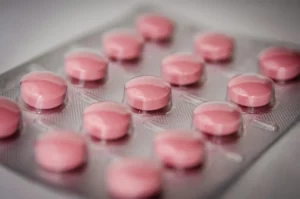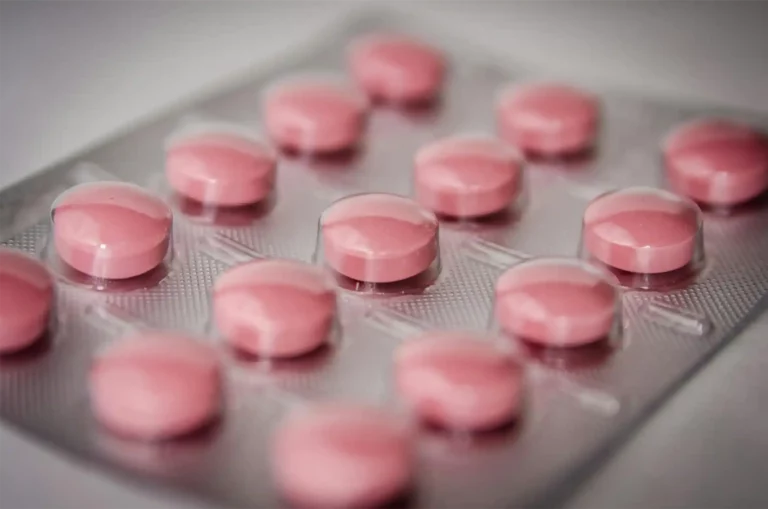Before a new compound can be administered to humans, it must undergo a rigorous process to ensure its safety, efficacy, and pharmacological profile. This process begins with preclinical research, a critical phase in the drug development process that bridges the gap between discovery and clinical application. Through a series of well-established scientific assessments, ranging from toxicology assessments to pharmacokinetics and efficacy models, preclinical research generates essential data to support Investigational New Drug (IND) applications and guide safe first-in-human trials.
Understanding Preclinical Research in Drug Development
Preclinical research refers to the laboratory and animal-based studies conducted to evaluate the biological effects of a drug candidate before it is tested in humans. The main purpose of pre-clinical testing is to answer key questions about the compound’s biological effects, toxicity, and mechanism of action, ensuring only the most promising and safe candidates advance to clinical trials
In essence, preclinical research in drug development aims to:
- Identify and characterize pharmacological activity
- Assess safety through preclinical toxicology studies
- Determine the pharmacokinetic (PK) and pharmacodynamic (PD) behavior of the compound
- Provide data to justify human testing under regulatory standards
- Establish the procedures for large-scale drug production
There are two main types of preclinical research:
- In vitro studies: Experiments performed outside living organisms, typically using cells or tissues.
- In vivo studies: Experiments conducted in living organisms, most often animal models, to simulate human disease and drug response.
These studies are designed to mimic the conditions expected in human trials, including careful selection of models and endpoints. They are conducted according to Good Laboratory Practice (GLP) standards to ensure data quality and reproducibility.

Key Steps in Preclinical Research
Preclinical studies in drug development are carefully structured to cover a wide range of safety and efficacy parameters. Each step builds upon the previous one, forming a foundation for the clinical strategy. The main steps include:
Proof-of-concept (POC) and efficacy models
To validate that a drug candidate works as intended, preclinical efficacy studies are conducted using disease models. These proof-of-concept tests evaluate whether the compound produces the desired therapeutic effect in vivo, providing critical data on:
- Dose-response relationships
- Onset and duration of action
- Mechanism of action within relevant biological pathways
POC data are crucial for selecting the best candidates for clinical development and for defining initial patient populations.
Pharmacokinetics and pharmacodynamics (PK/PD) studies
Understanding how a drug behaves in the body is key to predicting its performance in humans. Pharmacokinetics (PK) investigates the absorption, distribution, metabolism, and excretion (ADME) of the compound, while pharmacodynamics (PD) explores the drug’s biological effects and mechanism of action.
PK/PD modeling provides dose-exposure-response relationships, which are essential for:
- Optimizing dosing regimens
- Anticipating interspecies differences
- Informing dose range finding and safety margins
In preclinical translational research, efficacy data are closely integrated with PK/PD insights to predict human outcomes. These models help researchers refine hypotheses and prioritize compounds for development.
Obtaining reliable data on the absorption, distribution, metabolism, and excretion of a drug candidate requires highly sensitive and specific analytical techniques. In addition, identifying and quantifying relevant biomarkers can provide critical insights into the compound’s pharmacological response and safety profile. The use of advanced technologies, such as liquid chromatography coupled with mass spectrometry (UPLC-MS/MS), enables precise analysis of both pharmacokinetic profiles and biomarkers associated with efficacy and toxicity.
Dose range finding and safety pharmacology
With PK/PD data in hand, researchers perform dose range finding (DRF) studies to identify the appropriate dose levels for subsequent toxicology and efficacy assessments. These studies aim to find the maximum tolerated dose (MTD) that does not produce unacceptable side effects and the minimum effective dose (MED) that still elicits a therapeutic effect.
Safety pharmacology (SP), conducted in parallel or just after dose range finding, focuses on identifying and mitigating potential adverse effects of new drug candidates before they are tested in humans. It aims to predict and prevent harmful consequences on vital organ systems, particularly the cardiovascular, central nervous, and respiratory systems. SP studies are outlined in the International Conference on Harmonisation (ICH) guidelines S7A and S7B, which provide the international standards for assessing potential effects on vital physiological systems.

Toxicology assessment
The final step of the preclinical study in the drug development process involves a comprehensive toxicology assessment under GLP conditions. These tests determine the potentially harmful effects of a drug on organs and systems over time. Studies often begin with acute toxicity tests, followed by subchronic and chronic evaluations to identify the no observed adverse effect level (NOAEL). Organ weights, histopathological changes, and clinical chemistry provide insight into dose-dependent toxic effects or reversibility of adverse effects..
FDA Guidance and Regulatory Requirements for Preclinical Toxicology Studies
Regulatory agencies such as the US Food and Drug Administration (FDA) and European Medicines Agency (EMA) require comprehensive documentation of preclinical toxicology studies as part of IND applications. Sponsors must provide comprehensive nonclinical data aligned with guidelines such as ICH M3(R2) for general safety studies, ICH S6(R1) for biotechnology-derived products, and ICH S9 for oncology drugs. The main objectives outlined in such guidelines are:
- Identification of an initial safe dose and dose escalation schemes for humans
- Identification of target organs for toxicity and potential reversibility
- Support for the design of clinical protocols
Compliance with Good Laboratory Practice (GLP) is mandatory to ensure data integrity and reliability. Regulatory submissions must include robust, reproducible data on toxicology, PK/PD, and safety pharmacology. Failure to meet these requirements can delay or halt clinical development.

Translational Insights: Bridging Preclinical Research and Clinical Trials
One of the main goals of preclinical studies is to generate insights that can be translated into successful clinical development. Preclinical translational research serves as a bridge, linking molecular and cellular findings to physiological effects and patient outcomes.
Key translational insights include:
- Identifying biomarkers for efficacy or toxicity
- Anticipating human pharmacokinetics based on interspecies scaling
- Refining target populations and dosing strategies for clinical trials
- De-risking development by excluding compounds with poor safety margins
Translational insights help reduce the risk of late-stage failures by ensuring that preclinical data are relevant and predictive of human responses. This approach supports informed decision-making in candidate selection, formulation development, and clinical trial design.
Ready to accelerate your drug development process with expert guidance and state-of-the-art preclinical research? At AMSbiopharma, we offer comprehensive services in preclinical strategies tailored to your project’s unique needs.
References
Food and Drug Administration. Step 2: Preclinical Research [Internet]. Silver Spring (MD): U.S. Food and Drug Administration; [cited 2025 Jul 3]. Available from: https://www.fda.gov/patients/drug-development-process/step-2-preclinical-research
Electronic Code of Federal Regulations. Title 21: Food and Drugs, Pt. 58 – Good Laboratory Practice for Nonclinical Laboratory Studies. eCFR [Internet]. Updated November 5, 2024 [cited 3 Jul 2025]. Available from: https://www.ecfr.gov/current/title-21/chapter-I/subchapter-A/part-58
Zou H, Banerjee P, Leung SSY, Yan X. Application of Pharmacokinetic-Pharmacodynamic Modeling in Drug Delivery: Development and Challenges. Front Pharmacol. 2020 Jul 3;11:997. doi: 10.3389/fphar.2020.00997
International Council for Harmonisation of Technical Requirements for Pharmaceuticals for Human Use (ICH). Safety Guidelines [Internet]. Geneva: ICH; [cited 2025 Jul 3]. Available from: https://www.ich.org/page/safety-guidelines
Food and Drug Administration. S6(R1): Preclinical Safety Evaluation of Biotechnology‑Derived Pharmaceuticals [Internet]. Silver Spring (MD): U.S. Food and Drug Administration; [cited 2025 Jul 3]. Available from: https://www.fda.gov/regulatory-information/search-fda-guidance-documents/s6r1-preclinical-safety-evaluation-biotechnology-derived-pharmaceuticals
European Medicines Agency. ICH M3(R2): Non‑clinical Safety Studies to Support Human Clinical Trials and Marketing Authorization for Pharmaceuticals – Scientific Guideline [Internet]. Amsterdam: EMA; [cited 2025 Jul 3]. Available from: https://www.ema.europa.eu/en/ich-m3-r2-non-clinical-safety-studies-conduct-human-clinical-trials-pharmaceuticals-scientific-guideline


